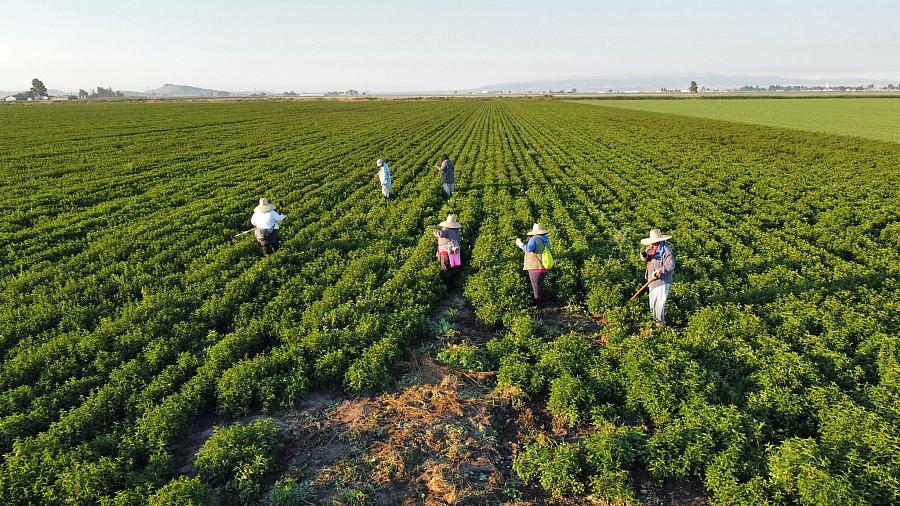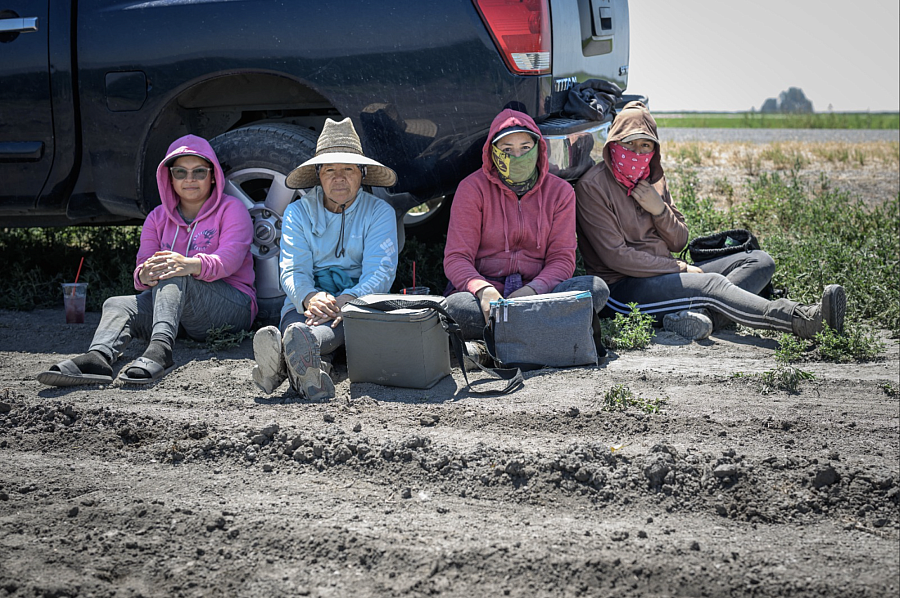Building trust with ‘gate openers’ proves key for reporting on undocumented farmworkers’ access to health care in California

(Photo by Manuel Ortiz)
There is a laundromat in Smith River, a small agricultural community just south of the Oregon border in Del Norte County, California. Located in an RV park on the edge of town, it is one of the area’s few communal gathering places for local farmworkers.
It was here we first met Alvaro Urrea Olivares, whose story became the focus for the second in our series looking at how California’s latest Medicaid expansion to all adults, regardless of immigration status, is reaching farmworkers in the state’s rural north. Urrea, who is undocumented, unhoused and suffers an array of health issues, encapsulates both the challenge and promise of expanded health care access in this region.
When planning our reporting project, the word that cropped up again and again was trust. Farmworkers in California have historically lacked access to affordable health care even as they suffer disproportionately from a range of negative health outcomes. Yet because roughly half the work force is undocumented — estimates put the number at roughly 400,000 — many are reluctant to come forward.
Dynamics in the state’s far north present added challenges. The region is vast, comprising nearly 20% of California’s total landmass. It is also thinly populated, with migrant communities often isolated by both geography and language.
Coming from the San Francisco Bay Area, we had few connections and even fewer leads at the outset of the project. And so, the question confronting us initially was, ironically, the very same confronting the state as it sought to realize it’s goal of ensuring health care for all Californians: how to reach communities with which it previously had little to no relationship with and even less trust.
In late spring, my reporting partner, Manuel Ortiz, traveled to Smith River, a seven-hour drive north up Highway 101 from the Bay Area, for a scouting trip. A sociologist by training, Ortiz believed that if he could find communal spaces where farmworkers gather during their off hours, he might be able to meet people and make the necessary connections.
The laundromat in Smith River turned out to be just such a place.
Ortiz stumbled on the Smith River RV Park — home to some 50 farmworkers and their families — by chance, and over the course of several days he camped out with his trailer, which doubles as a mobile recording-broadcast studio. During this time, he got to know the park manager, a fellow migrant from Mexico, and its residents, including Urrea.
Those connections were key. In this era of remote work, of Zoom meetings and digital spaces, covering undocumented communities in rural parts of the state like Smith River requires a physical presence. You have to be there. You have to spend time with the communities you are looking to cover. You have to speak with them, get to know them and, ultimately, earn their trust.
Trusted intermediaries, including local health providers and community-based organizations, can also play an important role in this.
That was the case for our reporting in Hamilton City, in Butte County, where we worked with staff at Ampla Health, a federally qualified health center (FQHC) tasked with implementing the state’s Medi-Cal expansion across six counties in the rural north. We were fortunate in that our organization, Ethnic Media Services, had collaborated with Ampla Health previously for an earlier project. We were able to leverage this relationship and, as with our earlier collaboration, they again proved to be not just a wealth of information but a gate opener to the wider community.

(Photo by Manuel Ortiz)
Tulelake was more challenging. Located in far northern Siskiyou County, the town of just under 1,000 residents — a majority of whom are migrant farmworkers and their families —is among the most isolated of all the communities we covered for this project. Local politics (the region as a whole is deeply conservative) and distant and at times fraught relations between the county’s majority non-Hispanic white population and the town’s Latino residents created a somber, almost stultifying atmosphere.
People were wary of speaking openly, especially to outsiders like us.
It took repeated and consistent outreach over the course of nearly two months before we even got a response and were able to connect with a local organization, TEACH, which assists community members with Medi-Cal enrollment, among other services. After several back-and-forth email exchanges, we were able to set up an in-person interview, which led to more introductions and finally engagement with the wider community.
Among the most important moments here was when we were invited by a local promotora, who organizes monthly gatherings for farmworker women to learn about traditional methods of health care and healing. This enabled us to invite several Spanish-language media colleagues from the Bay Area to join us to do their own reports on reproductive health care.
Perhaps the most revealing of our interviews from Tulelake came serendipitously when we were invited for breakfast at the home of Juana Chamoya, a 16-year resident of Tulelake who spoke on camera candidly and eloquently over the course of two hours about her life, work conditions, access to health care, and taboo topics like race relations and rising anti-immigrant rhetoric.
Looking back on our reporting, here are a few lessons we can share about reporting on workers in California’s far north:
- “There is no substitute for being there, spending time and listening,” says UC Davis’ Dr. Sergio Aguila Gaxiola, who has spent his career studying health inequities impacting California’s farmworkers. While data and experts can provide valuable background information, there are few outside intermediaries (fixers) who can serve as gate openers to the workers themselves.
- Farmers don’t want outsiders talking to farmworkers in the field, making it difficult to find sources to speak to. Hence, locating communal spaces where farmworkers gather off-hours — churches, eateries, the local laundromat — was critical to making the connections we needed for this project.
- Interviewing local “authorities” such as employers, city and county officials, and public health experts proved a dead-end. Many were unresponsive to our repeated requests for interviews. There are also strict constraints on what local agency people are allowed to share with reporters — everything must be cleared by the official in charge of communications, a process that can often obscure as much as it reveals. Ultimately, we made the decision to devote our time and resources to developing relationships with farmworkers on the ground, rather than seeking contacts to interview in government.
- Finally, the information gap in this region is widened by the lack of local in-language/in-culture news platforms. In Smith River, for example, Radio Bilingue provides Spanish language programming produced in Fresno, but there is no local news for the Spanish speaking population here.

